The ancient Khmer Empire constructed over 1000 temples within the city of Angkor. Unfortunately, the city of Angkor disappeared long ago. However, the best Angkor Temples remain standing and are located near the modern day city of Siem Reap. Three of the most popular and spectacular temples are Bayon, Ta Prohm and Angkor Wat.
The Angkor Temples and the “God Kings”
The ancient city of Angkor was the capital city of the Khmer empire and it was the largest city in the pre-industrialized world. Additionally, The city featured the best Angkor temples at its center and it sprawled for almost 400 square miles at the height of power.
King Jayavarman II founded the Khmer Empire in AD 802. Additionally, the Hindu king was the center of power in Khmer civilization. Therefore, the Angkorian monarchs also assumed the title of “God King” because they were natural rulers of the universe. Indeed, the best Angkor temples were dedicated to the god kings and the city was centered around them.
Lasting Remnants of Khmer Civilization
Unfortunately, the Khmer have been greatly reduced since the collapse of the empire in the 15th century. In addition, the devastation of war has severely scarred Cambodia in the 20th century. Although the Khmer make up 95% of the present day population of Cambodia and Khmer is the official language.
Initially, Hindu was their religion starting in the 8th Century AD. However, there would be several transitions between Hindu, Theravada Buddhism and Mahayana Buddhism throughout the early history of Cambodia. In modern times, 95% of the population practice Theravada Buddhism. Even the extremism of the Khmer Rouge could not overpower the Buddhist roots of the Khmer people.
Bayon Temple
Bayon Temple was constructed by King Jayavarman VII at the end of 12th or early 13th century. However, Bayon Temple received some modifications by subsequent Khmer rulers. These alterations reflect the fluctuations of the state religion between Hinduism and Buddhism. Indeed, the mixing of religious themes is typical of the Angkorian Temples. Nonetheless, the Buddhist theme remains predominant, represented by the 200 smiling faces of Lokeshvara (Avalokiteshvara).

The Significance of Lokeshvara
The 200 smiling faces of Lokeshvara are the most prominent features of all the Angkor Temples. Indeed, Lokeshvara is an embodiment of the Bodhisattva Avalokiteshvara, who Mahayana Buddhists believe embodies the Buddha’s compassion.
Bodhisattva definition: an individual who has attained enlightenment and elects to forego Nirvana in order to save others.
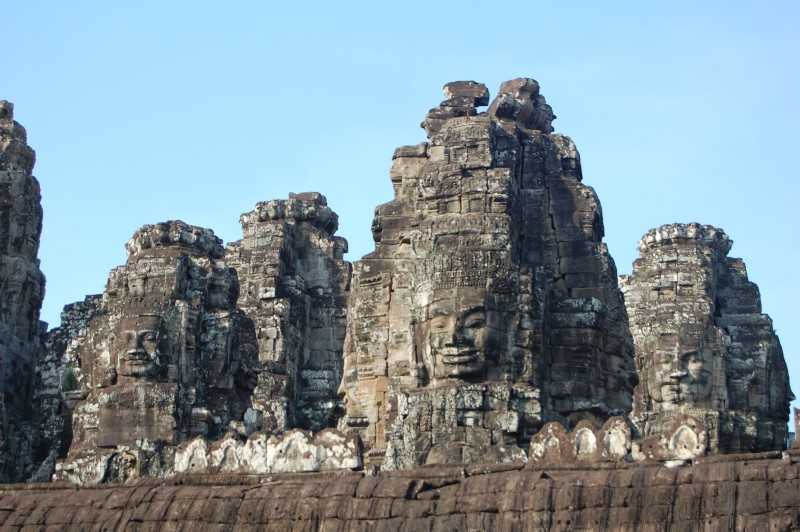
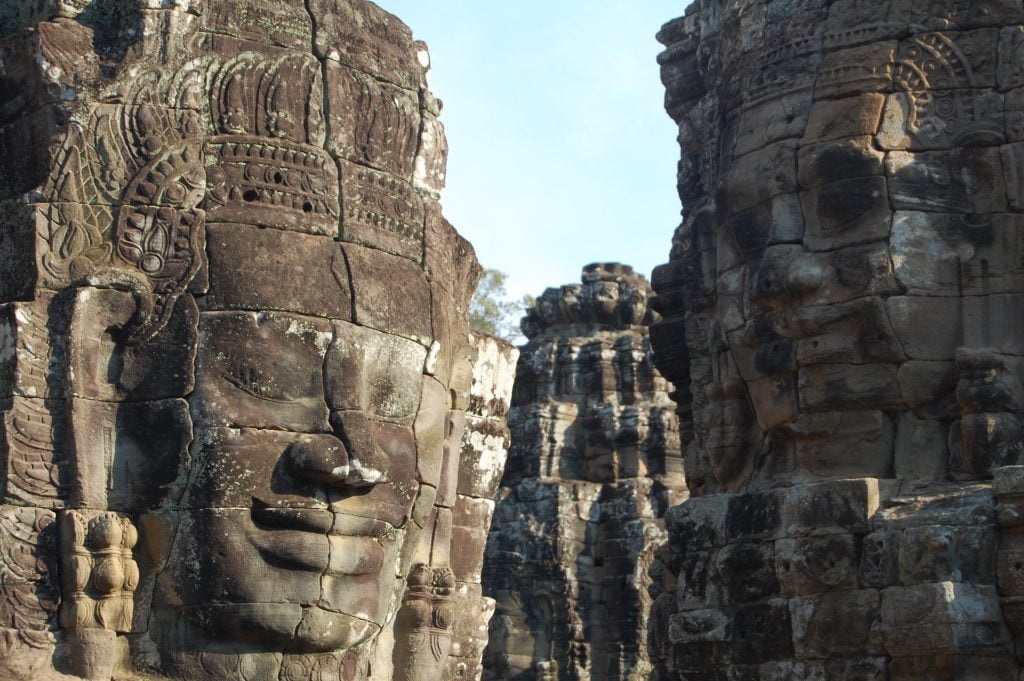

There are approximately 200 remaining images of the Lokeshvara at Bayon Temple in various states. Unfortunately, many of the towers have decomposed over time and it is difficult to know exactly how many there actually were.
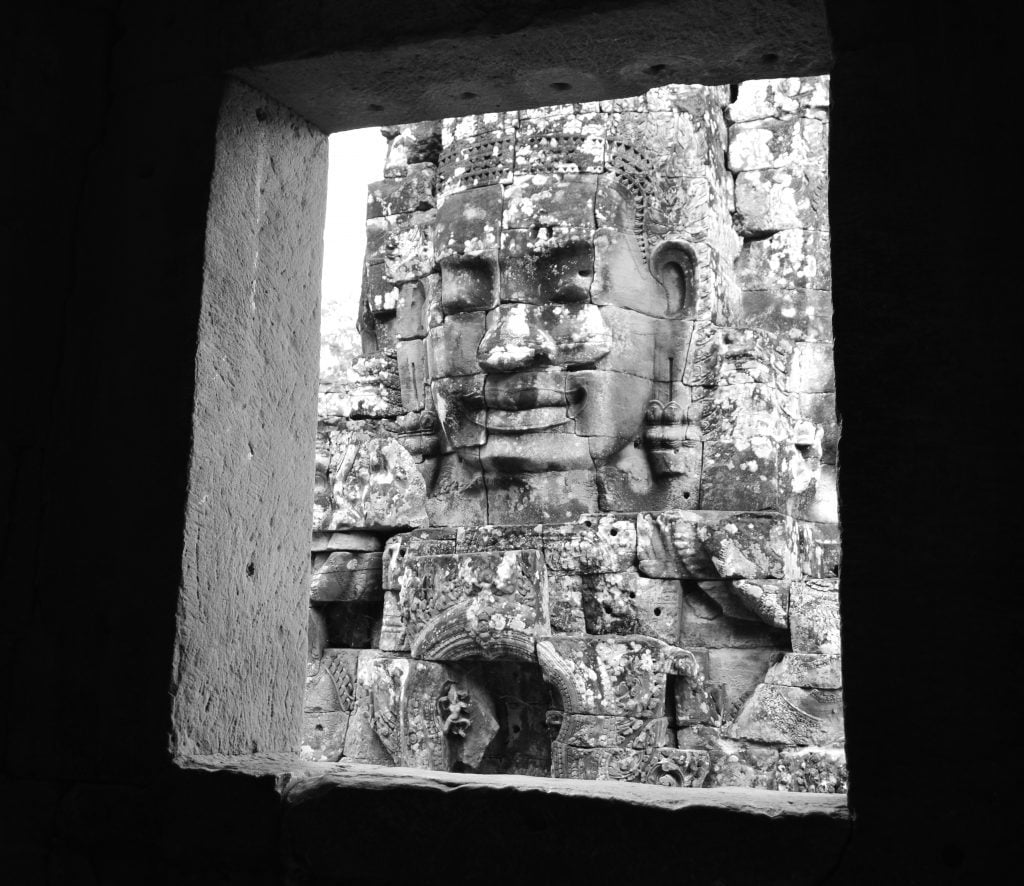
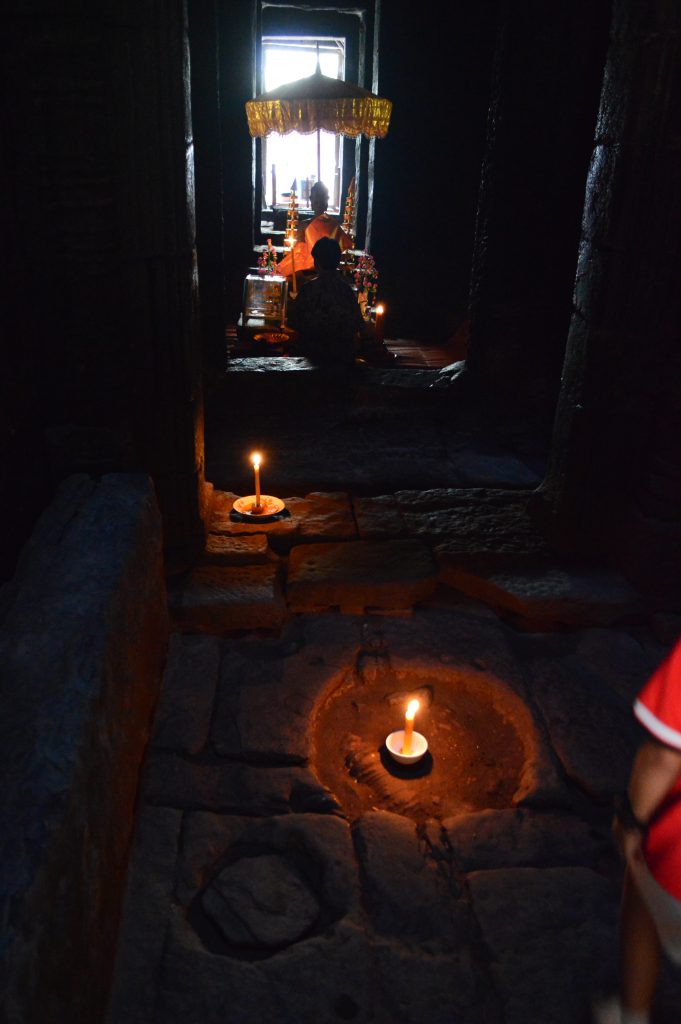
Ta Prohm
King Jayavarman VII initiated another ambitious temple project at approximately the same time period as Bayon. As a result, the king dedicated Ta Prohm to Mahayana Buddhism, similar to Bayon. However, the present day condition of this temple is in a much different state!
The jungle consumed most of the best Angkor temples after the collapse of the Khmer Empire in the 15th century. However, Ta Prohm merged with the jungle in a much more coherent and aesthetically pleasing manner. As a result, the temple grounds received minimal restoration works in order to preserve the natural ambience. This was done as a:
“Concession to the general taste for the picturesque.”
École française d’Extrême-Orient
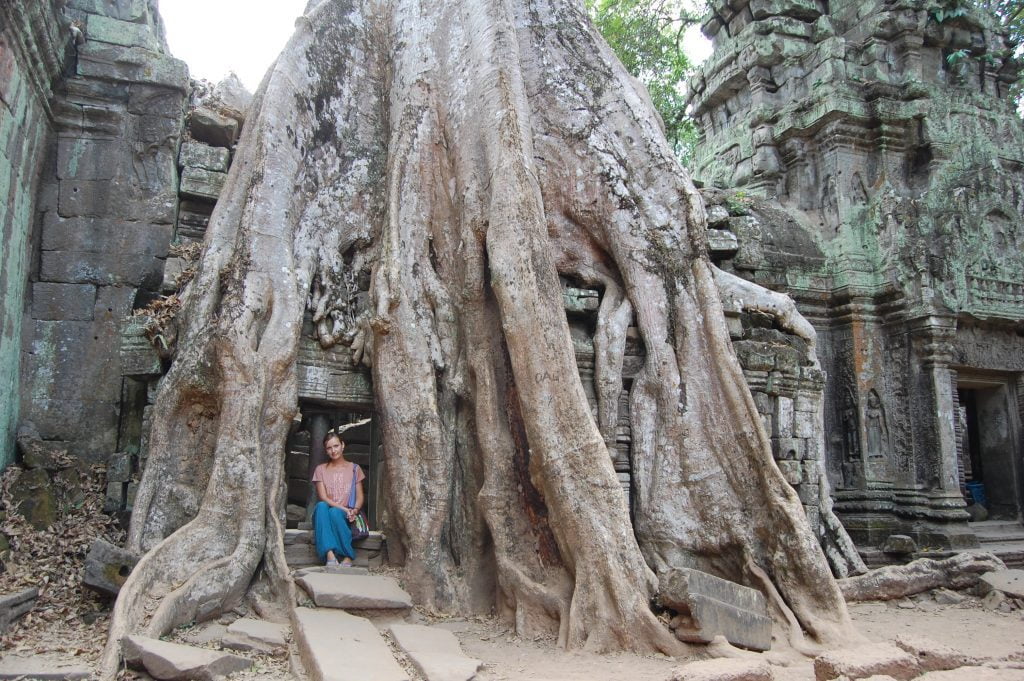
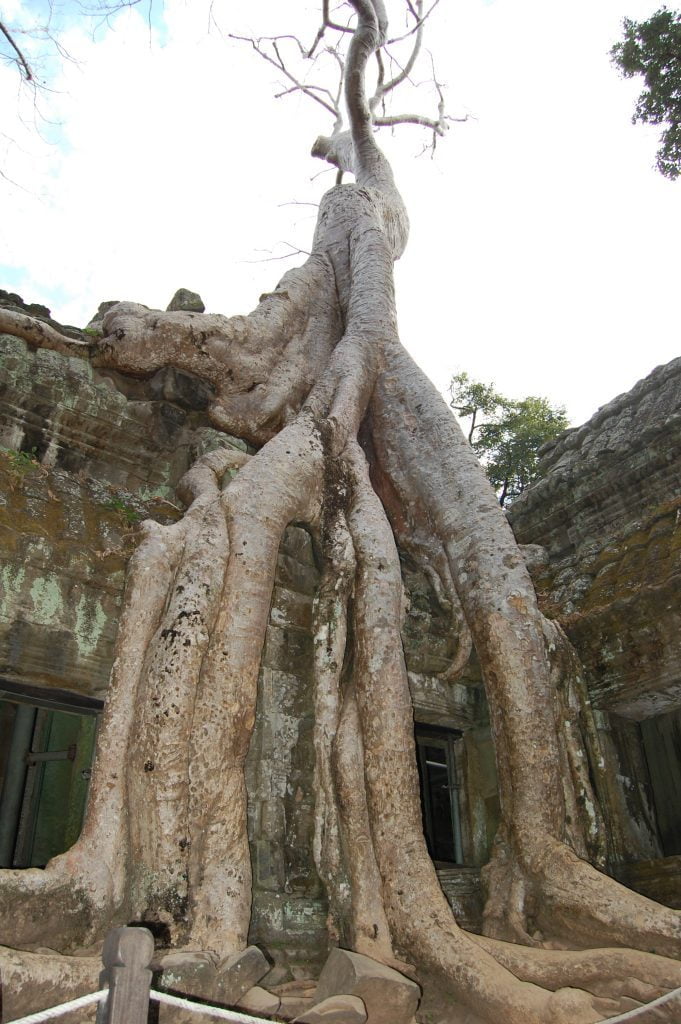
Humans were not the only creatures that mother nature imbued with artistic talent. Instead, mother nature has created the world’s best artwork using trees.
The two species of tree that predominate at Ta Prohm are the silk cotton tree and the strangler fig. However, scholars still actively debate over the identification of the trees that cover the Ta Prohm complex so eloquently.


Similar to other Angkorian temples, the orientation of the Ta Prohm temple complex is towards the east. However, Ta Prohm is flat as compared to the pyramid mountain style architecture of other Angkor temples.

Angkor Wat Temple
The construction of Angkor Wat began in the 12th century as a project of King Suryavarman II. The king elected to use a Hindu theme for the temple construction and he dedicated Angkor Wat to the Hindu god – Vishnu. Additionally, Angkor Wat is an enormous temple and it remains as the largest religious monument in the world.
The central feature of Angkor Wat is Mt Meru. Mythical Mt Meru is the home of the divine beings of the Hindu pantheon. Additionally, the orientation of Angkor Wat faces west instead of east which is a deviation from the common design of the best Angkor temples. This deviation still perplexes modern archeologists.


There were a few elegant doorways inside of Angkor Wat Temple, but unfortunately many sections of the interior remain unfinished. As a result, there is a lot of vast empty space.
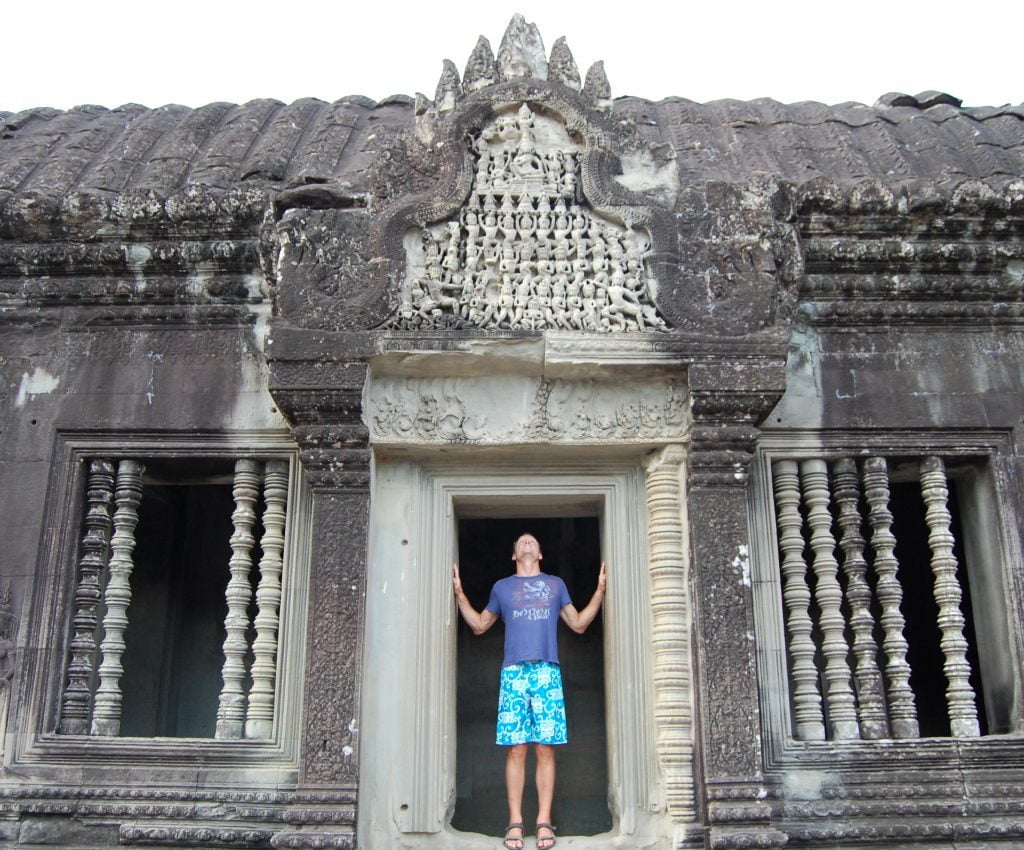
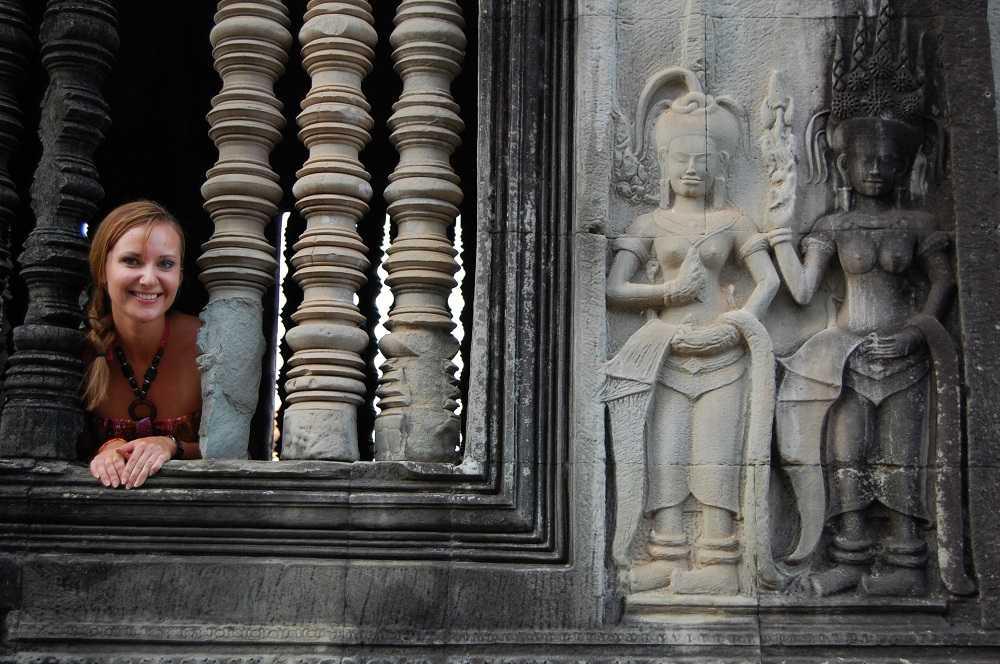
“Churning of the Sea of Milk”
Located in the SE corner of the Angkor Wat Temple complex is a gallery featuring the Hindu fable entitled “Churning the Sea of Milk”. Indeed, Hindu mythology features a great battle between the gods and the demons. Essentially, it was a tug of war using the king of serpents as a rope and Mt Mandara was the churning rod between them.
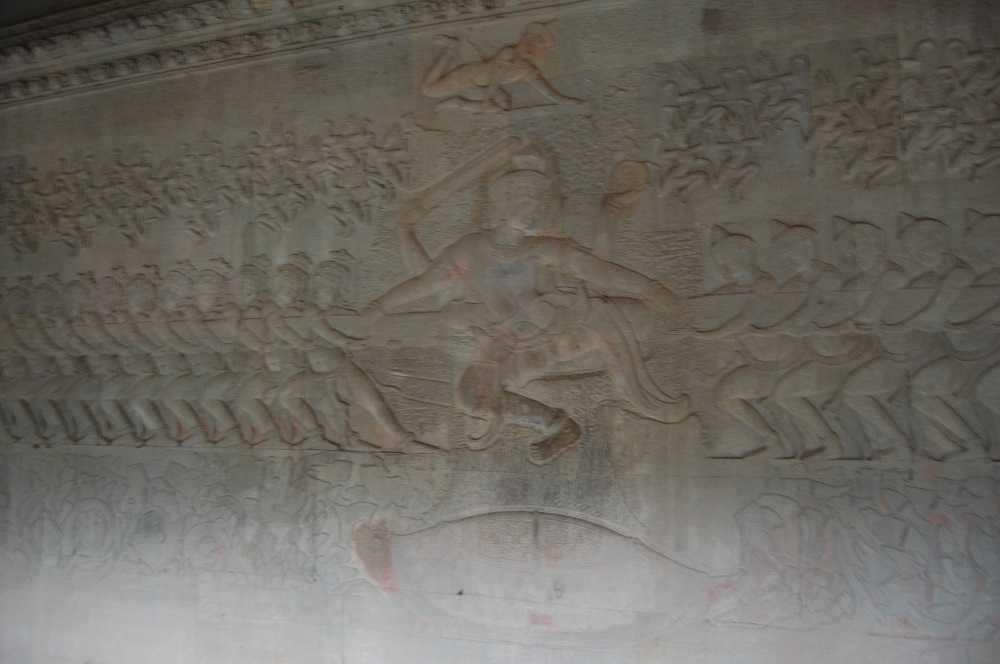
The churning of the sea created a poison so strong that it was deadly to both gods and demons. Fortunately, in the end, the Hindu god Vishnu swallowed the poison which saved the universe.
Metaphorically speaking, this result could be the conclusion of many of modern civilization’s conflicts. However, I am not sure if we can rely on Vishnu to save us a second time.

The galleries of Angkor Wat Temple feature several other epic bas-reliefs. However, “Churning of the Sea of Milk” is the most prolific and widely recognized. Furthermore, most tourists believe that Angkor Wat is the best of the best Angkor temples. Indeed, it is the biggest temple but not necessarily the best. Nonetheless, over 2 million tourists visit the complex annually. Additionally, Angkor Wat is featured on Cambodia’s national flag.
However, the fact of the matter is that large sections of Angkor Wat remain unfinished. Additionally, the more observant visitor would notice that it clearly lacks the elegance and natural phenomenon found at other temples such as Bayon Temple and Ta Prohm.
Enjoy the Best Angkor Temples
Siem reap was certainly built with tourism in mind. Unfortunately, a large section of town takes on the atmosphere of Mardi Gras. However, there are some nice spots to stay outside the city center. Also, don’t forget to visit some of the less famous but amazing Khmer Temple ruins.

